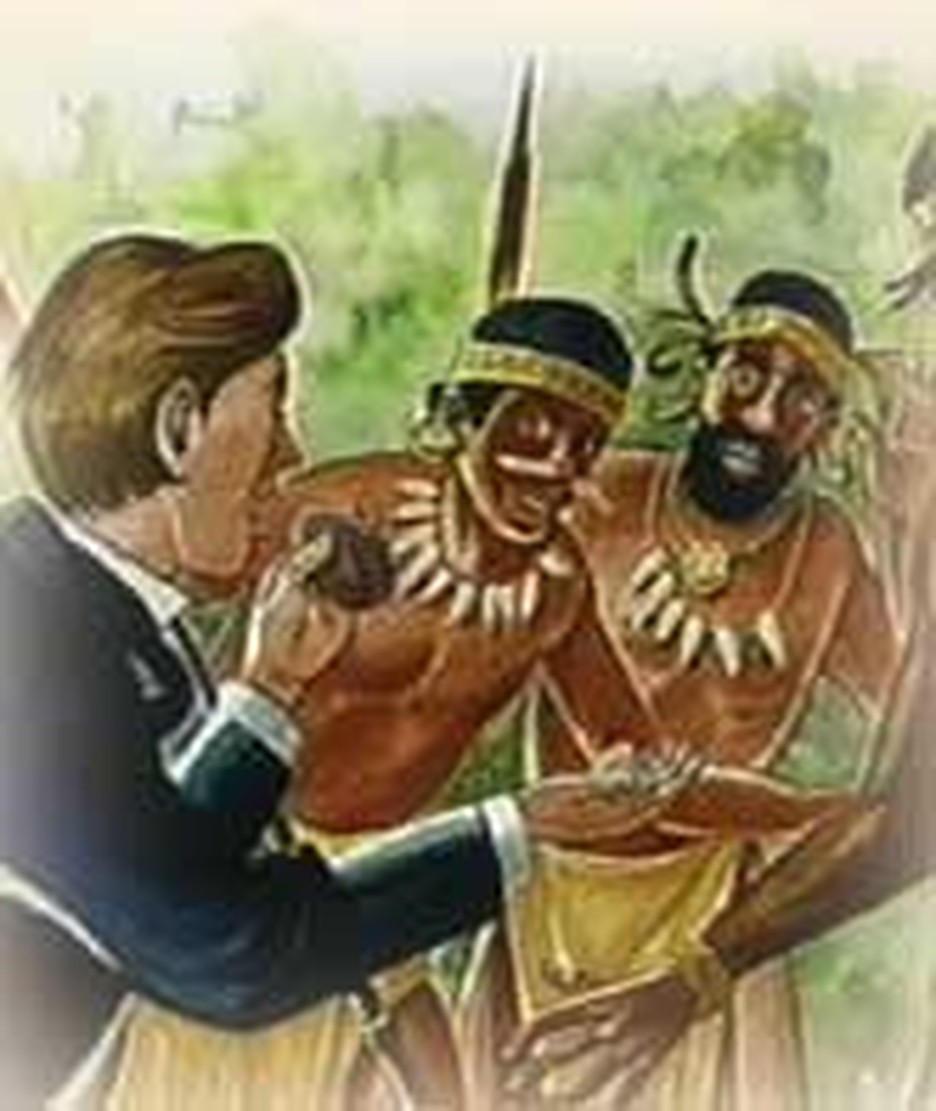
"You will be eaten by cannibals!" Mr. Dickson thought John Paton was foolish to go as a missionary to the New Hebrides. Not twenty years earlier, John Williams and James Harris had become the main course of a cannibal meal.
John Paton could not to be turned from his purpose. "Mr. Dickson, you are advanced in years now, and your own prospect is soon to be laid in the grave, there to be eaten by worms; I confess to you, that if I can but live and die serving and honoring the Lord Jesus, it will make no difference to me whether I am eaten by cannibals or by worms; and in the Great Day my resurrection body will rise as fair as yours in the likeness of our risen Redeemer."
John did not step straight from school into foreign missions. As a young man, he become an evangelistic worker in Glasgow, visiting home after home with the gospel, in spite of threats, abuse and the contents of chamber pots dumped on him. Under those conditions, he learned the steadiness and determination that carried him through his later adventures. The people of Glasgow came to love him so much that they begged him not to leave.
With his wife, Mary, John sailed from Scotland in December, 1857. On this day, November 5, 1858 they landed on the island of Tanna in the New Hebrides, an island chain northeast of Australia. With them was another young missionary, Joseph Copeland.
The people were as fierce as he had been told. Cannibal celebrations took place in sight of the Patons' home and human blood fouled the drinking water. The natives frightened Joseph Copeland so much that he lost his wits and died; they continually threatened John. Time and again they lifted their guns to shoot him, or raised their axes to bash him in the head, but always they held back as if restrained by a greater power. Early the next year, Mary bore a son. Both mother and child came down with fevers and died. With a breaking heart, John dug their grave and laid them in it. Later he said, "But for Jesus, and the fellowship He vouchsafed me there, I must have gone mad and died beside that lonely grave!"
John remained on Tanna. He went from village to village telling of the love of Christ and translating Scripture into the Tannese language. But finally, when all his supplies were stolen and starvation stared him in the face, he made his way across the island to the settlement of a second missionary. Exhausted he fell asleep. The Tannese surrounded the home and set an adjacent building on fire. It appeared the missionaries would burn to death. But a tornado whipped across the compound, dousing the fire. The savages fled in terror. The next day, a sail appeared and the missionaries escaped on the boat.
After leaving Tanna, John remarried and worked on a smaller island. He had the joy of seeing the people of Aneityum come to Christ in a way the people of Tanna never had.
Bibliography:
- Harrison, E. Myers. Heroes of Faith on Pioneer Trails. Chicago, Illinois: Moody Press, c.1945.
- Johnston, Julia H. Fifty Missionary Heroes Every Boy and Girl Should Know. New York: Fleming H. Revell Co. 1913.
- Paton, John. Autobiography.
- Piper, John. "You Will Be Eaten by Cannibals!" Courage in the Cause of World Missions; Lessons from the Life of John G. Paton http://www.missionsminded.org/John%20Paton.htm
Last updated June, 2007


